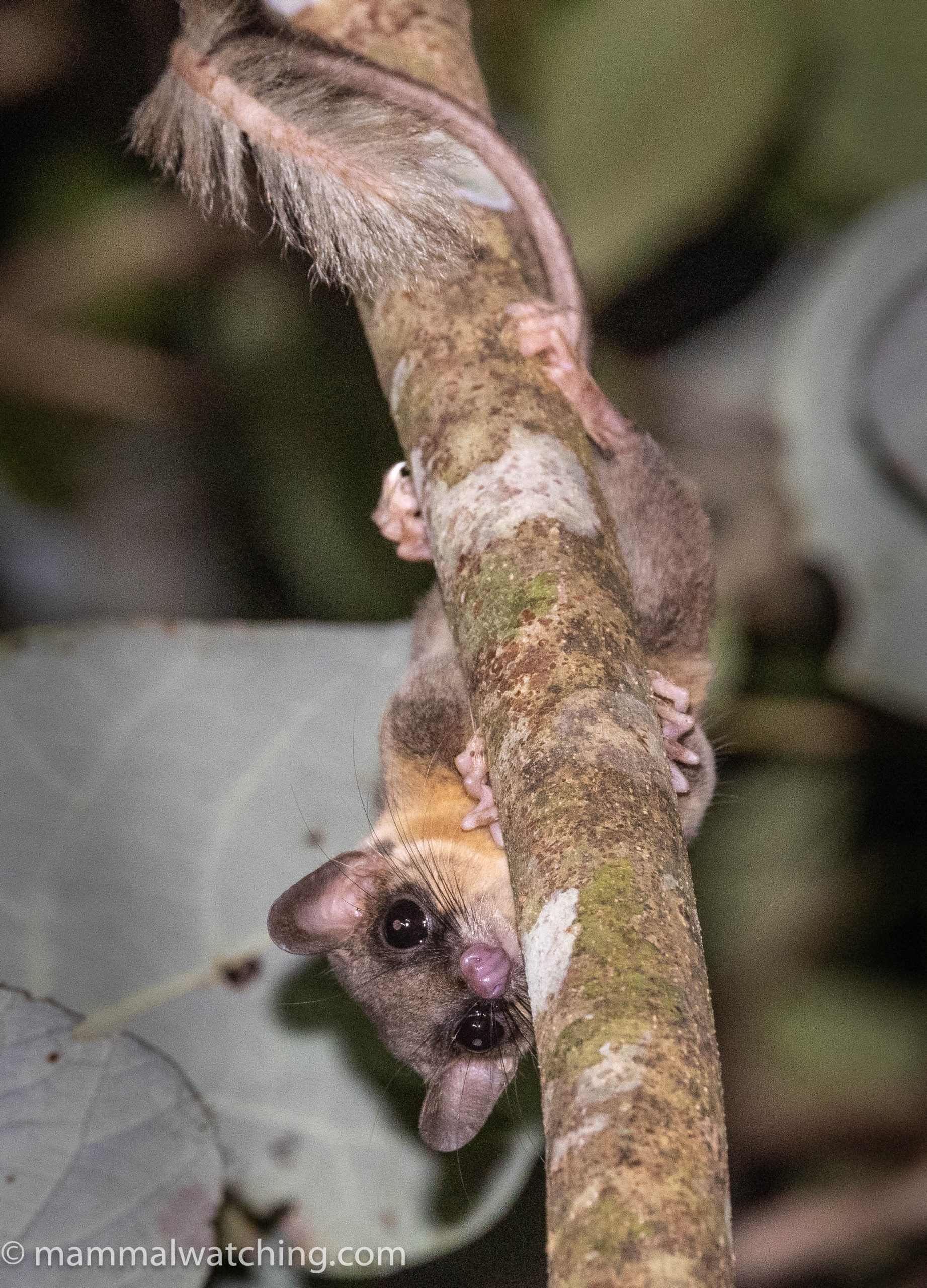
Three Nights in Sumatra: Way Kambas and a wild rabbit chase
I spent most of September in Indonesia, mainly in Sulawesi. But my trip began in Sumatra where Charles Foley, János Oláh and I met up with our guide Hari Yono (of Way Kambas fame) at Bandar Lampung (Radin Inten) Airport for a jaunt in search of Sumatran Striped Rabbits.
The ‘rabbit place’
Carlos Bocos had heard from researchers a year or so ago that hill forest, a three hour drive west of Bandar Lampung, was home to a healthy population of Striped Rabbits. Hari knew about the place but had never been. So he agreed to set up a couple of nights camping in the area for us all.
Long story short, I have no idea if the area is home to a healthy population of Striped Rabbits. But I can say with certainty it is a hopeless place to search for them.
On reflection we – well me I guess – should have asked a lot more questions before we arrived. I assumed there were rabbits. I assumed there were trails. And I assumed we would have a good shot at seeing them by wandering through the forest at night with our thermals.
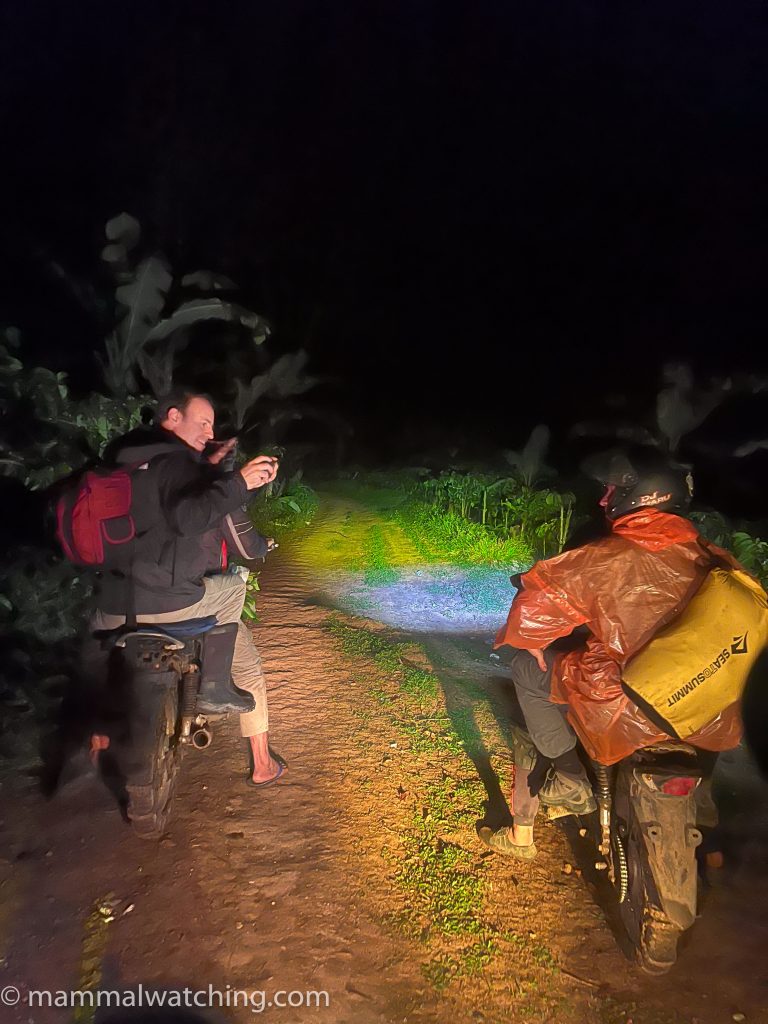
Access to the area is difficult. We arrived several hours later than planned after flight delays and reached the end of the tarmac after dark. There we met the local team that Hari had pulled together and jumped on the backs of their motorbikes to travel another 45 minutes or so up a series of tracks to our campsite on the edge of farmland. Our adrenalin was pumping from both the adventure of getting there and the prospect of seeing a Sumatran Striped Rabbit.
That excitement dwindled quickly to disappointment and then into lets get the hell out of here over the next few hours.
The local team seemed confident that rabbits were in the area. They had been seen close to our campsite we were told.
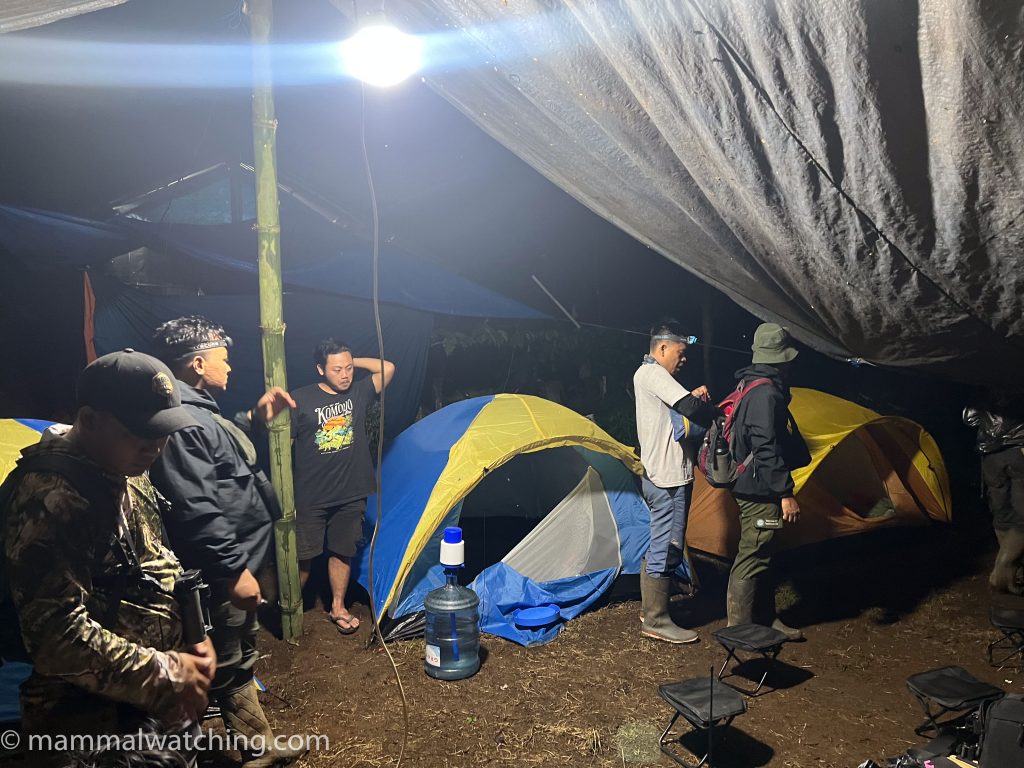
After a quick dinner we took a trail from camp on the other side of the creek just below us. It led straight up the side of a very steep hill. The trail was in fact a small plastic water pipe that ran up a ridgeline. It was something to follow but there was no trail. Just mud and a lot of spiny rattan to battle through. Even worse if you put a foot even a few inches to far to the side of the pipe the ground would disintegrate and you were starting to slide down the slope. Even if we had had a moment to look away from our next footstep, or the rattan we were tangled in, the forest was very thick and unless we were in danger of stepping on a rabbit there seemed little prospect of seeing one.
One curse-filled hour later we asked to return to camp to try the other trail that the locals said was better but which they were saving for our second night.
We took the bikes to the trailhead though only the most powerful or the motorbikes was able to get up a very steep and muddy track.
This trail, we were told, was wider, flatter and went through more open habitat. It was a few centimeters wider I guess, though there were still copious quantities of rattan to battle through. It was also a little less steep in places.
After walking for half an hour we entered a patch of forest that was marginally less dense: there might be a chance here to see a rabbit that was more than two meters off the trail. But this section lasted no more than 100 meters before we were plunged back into dense foliage, mud and rattan. It felt pretty hopeless We returned to camp.
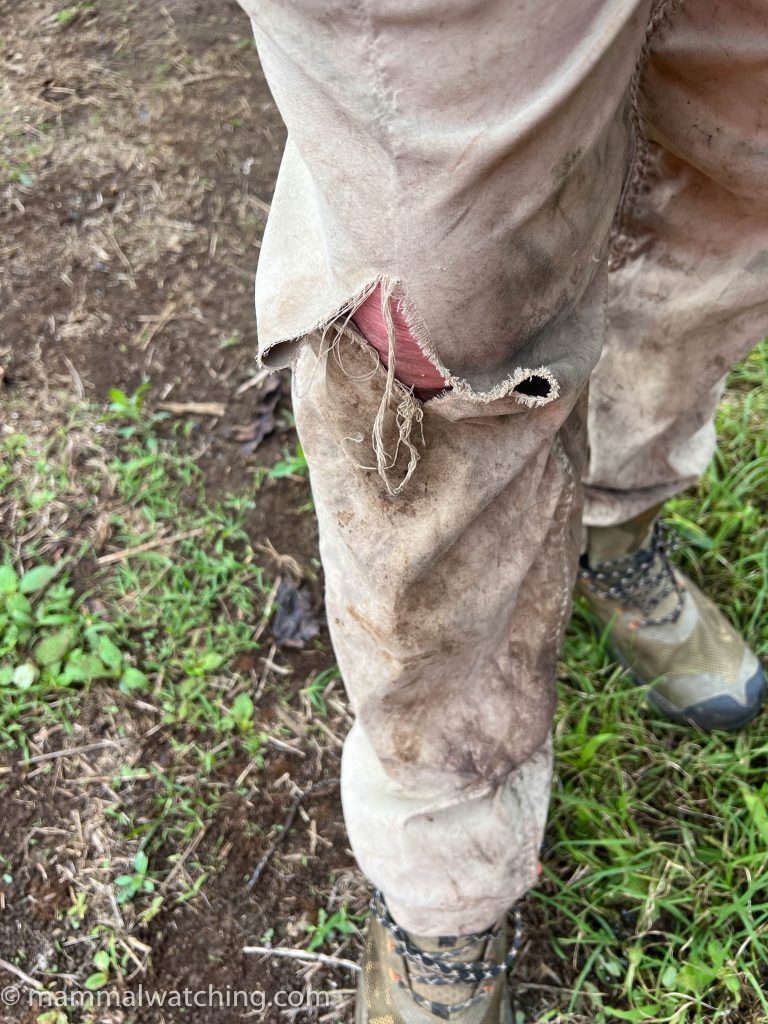
Rattan 1: 0 Jon
The next morning we started asking the questions we should have asked earlier. It seems that while rabbits were seen on camera traps every few weeks none of our team had actually seen on themselves. Nor were there any better trails. I had bought two pairs of trousers for the trip and one was ruined after our first night in the rattan. The decision to return to the comfort – and mammals – of Way Kambas National Park was an easy one.
We had seen no mammals the night before other than an unidentifiable heat lump on a distant tree visible from our campsite. The next morning some Siamangs were briefly visible from camp along with some distant monkeys that Hari identified as Black-crested Sumatran Langurs, a species I had not expected to see here and a lifer.
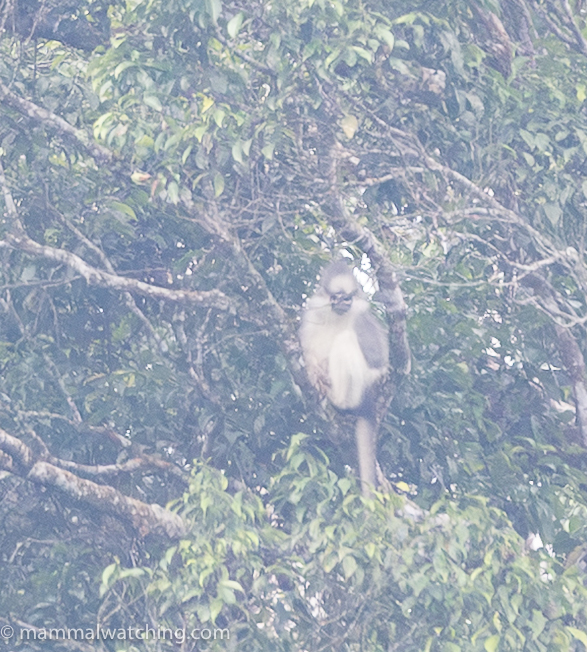
Black-crested Sumatran Langur (Presbytis melalophos)
A small consolation prize.
Way Kambas National Park
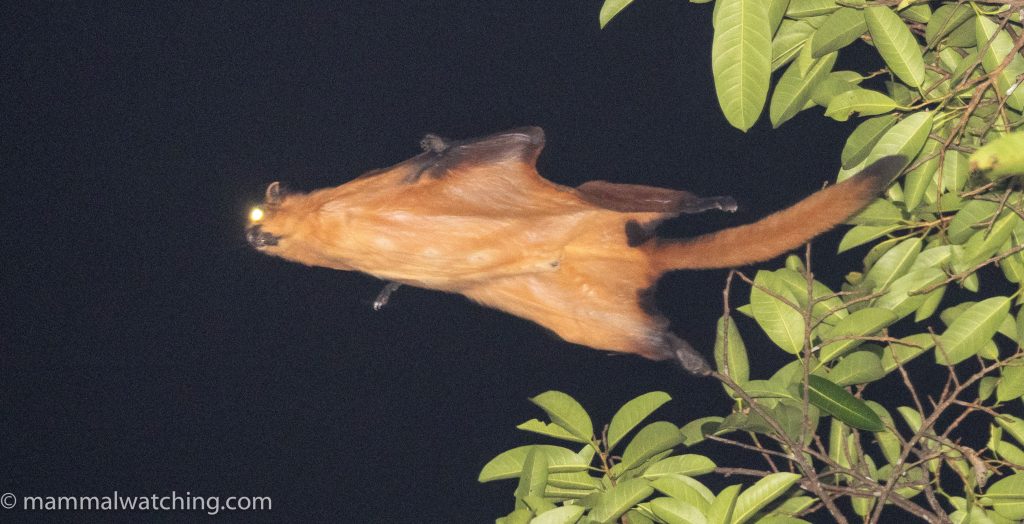
Red Giant Flying Squirrel (Petaurista petaurista)
Way Kambas National Park is well covered in other trip reports, including mine from 2015. Hari Yono (aka Hari Potter) is still the go to mammal guide there. He no longer works for the Satwa Elephant Lodge and is now self-employed with his own – comfortable – homestay next to the lodge. You can reach him on WhatsApp at +62 813-7928-5415.
Some of the park’s flagship mammals include Marbled Cat, Otter Civet and Sun Bear. None are particularly common but I suspect that Way Kambas is as good as anywhere for Marbled Cat, and second only to Deramakot as a place to see Otter Civets.
But every mammal was a flagship species for Charles Foley! This was his first time in SE Asia and virtually everything we saw was a lifer. I was insanely jealous.
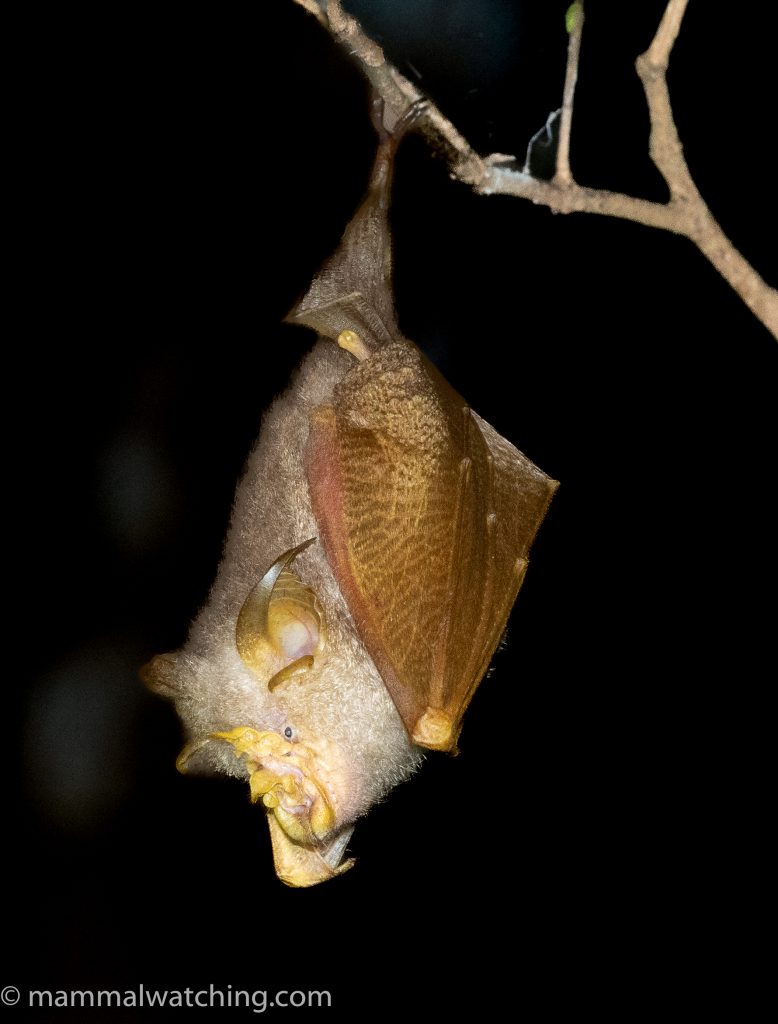
Trefoil Horseshoe Bat (Rhinolophus trifoliatus)
We spent the first evening in the park, entering after sunset until about midnight. We returned early the next morning for a few hours and then again in the late afternoon until 1am.
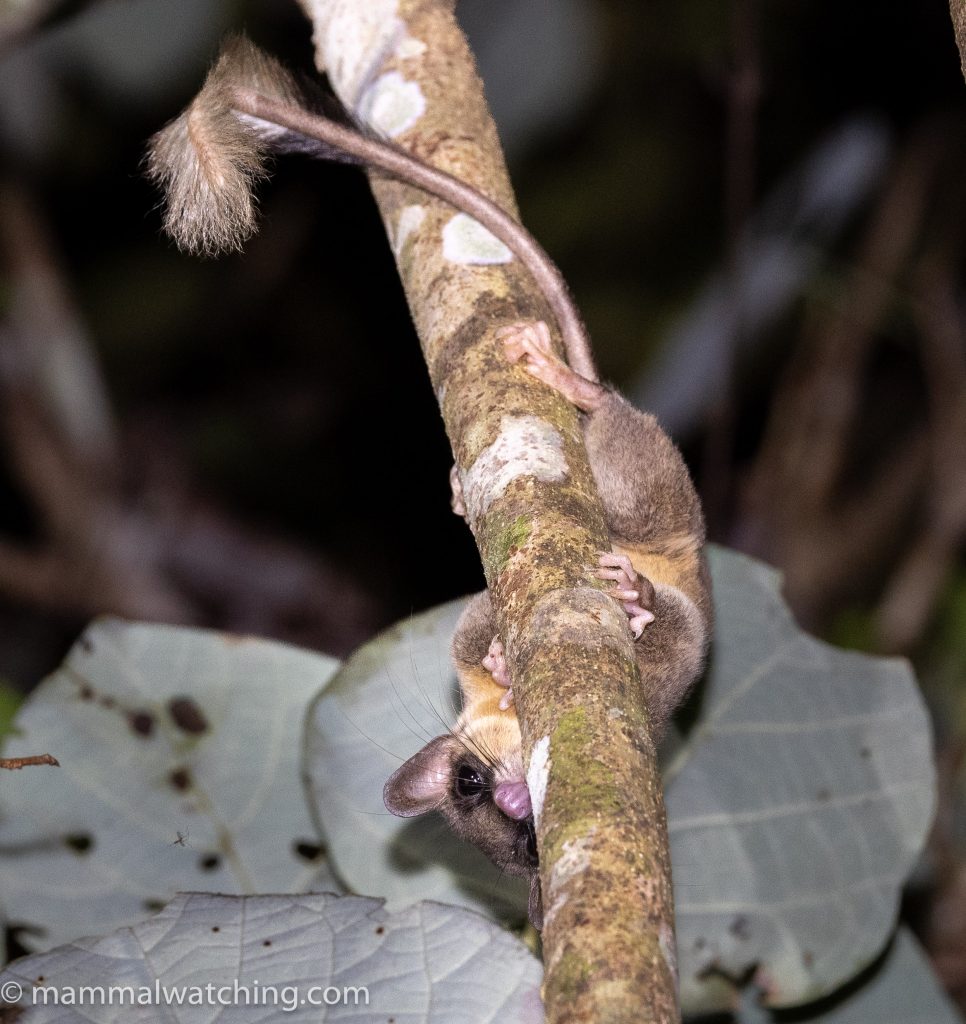
Pen-tailed Treeshrew (Ptilocercus lowii)
The first mammal we saw – picked up in a thermal – was a beautiful Pen-tailed Tree Shrew, my personal highlight from the park. I had seen them here, but only very poorly, last time I visited. Way Kambas is by the far the best place I know to see this species which is in a mammal family of its own. We saw another an hour later.
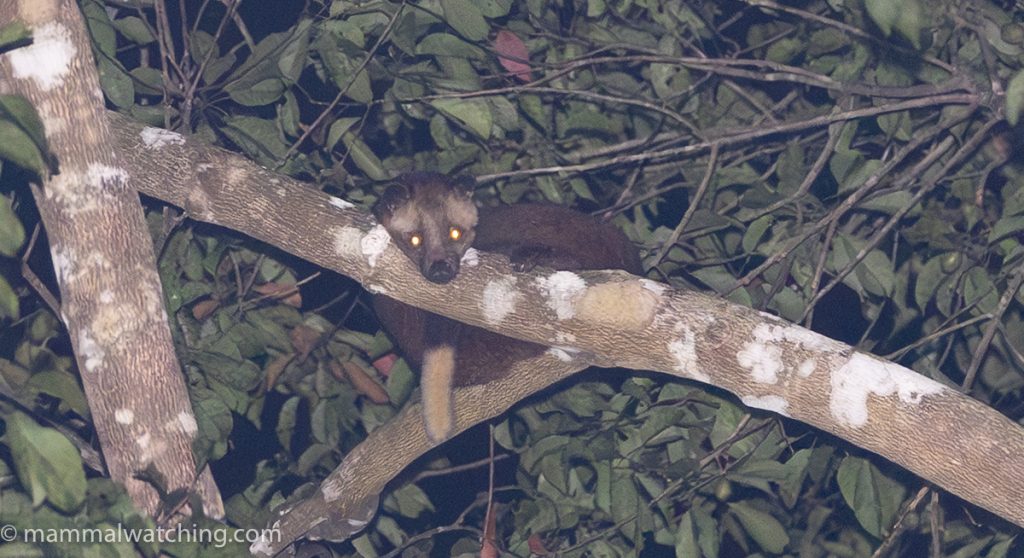
Masked Palm Civet (Paguma larvata)
The full mammal list is below. Some of the more interesting nocturnal sightings included a Banded and Masked Palm Civets and a Leopard Cat, along with both Greater and Lesser Mouse Deer.
We spent a frustrating half an hour trying to get a look at a carnivore that stayed largely obscured on the edge the flashlight beam. We thought it might have been a Marbled Cat at first but then decided it was most likely a Malay Civet based on the various bits of the animal we had each seen.
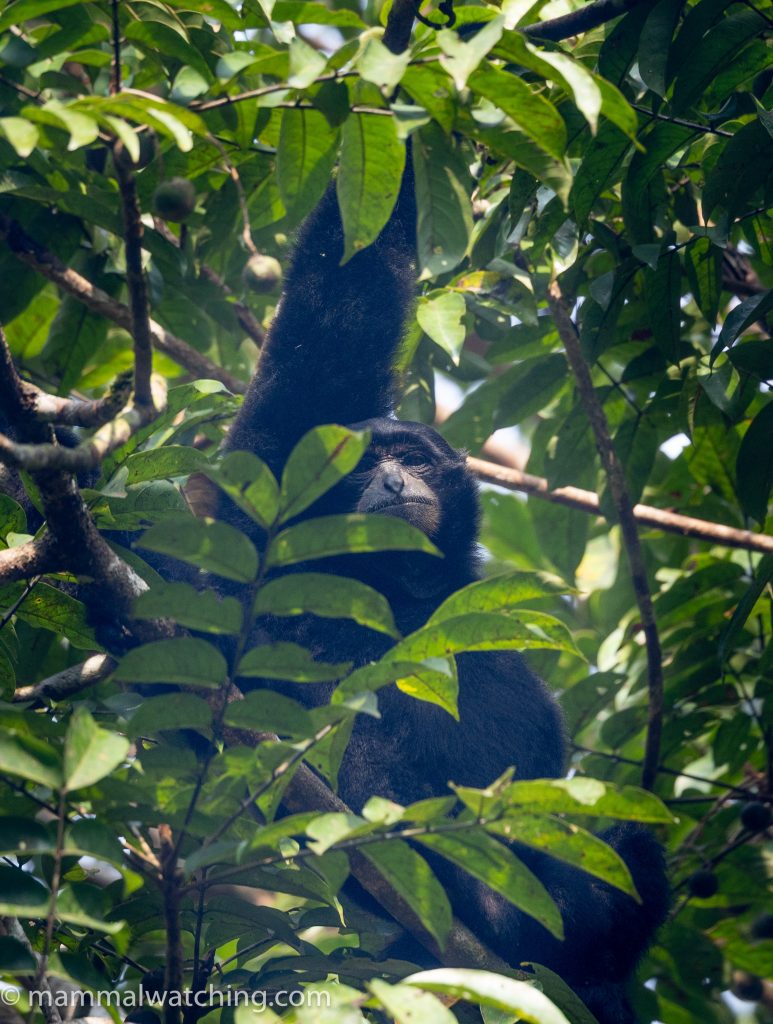
Siamang (Symphalangus syndactylus)
Primates in the park comprised Siamangs, Long-tailed Macaques, Sunda Silvery Langurs and, at night, a Sunda Slow Loris and roosting Mitred Langurs.
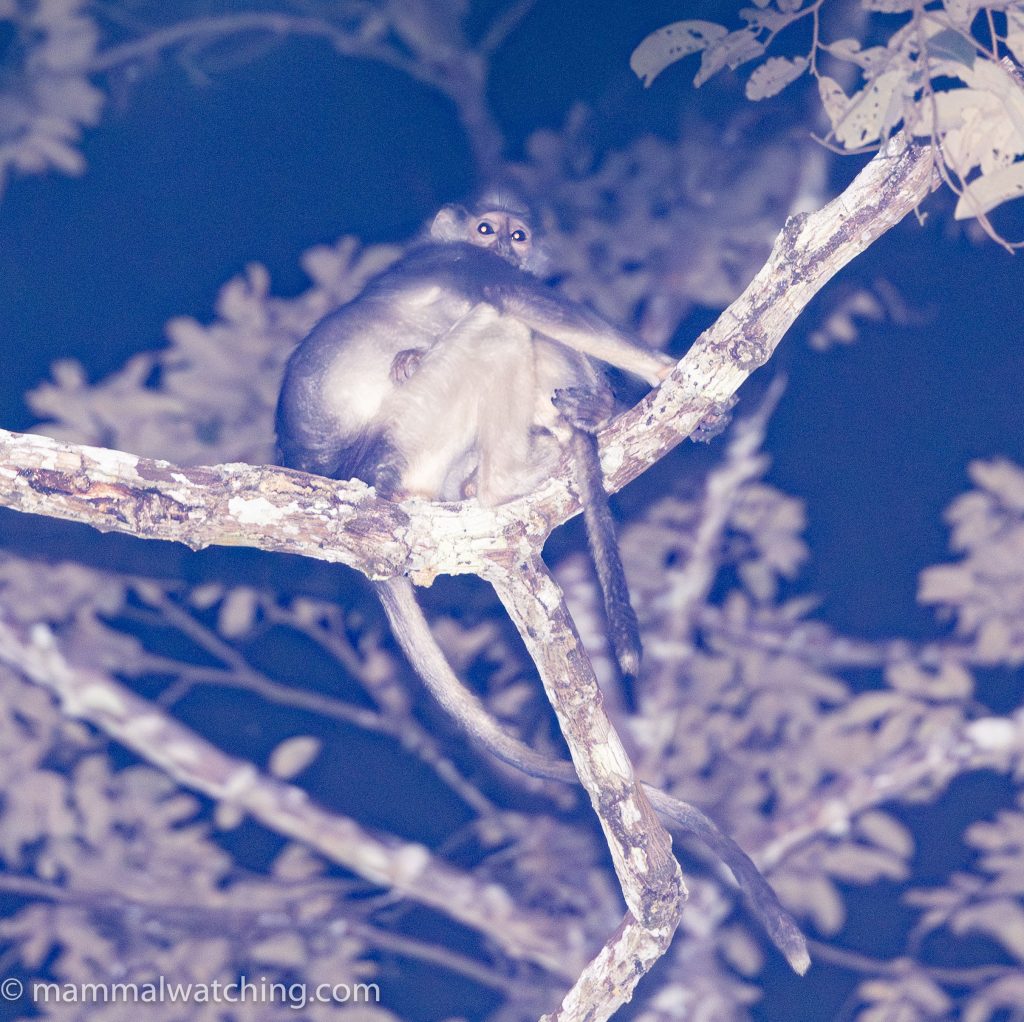
Mitered Langur (Presbytis mitrata)
This fruit bat pup remains unidentified and likely unidentifiable. But if anyone recognizes it then ….
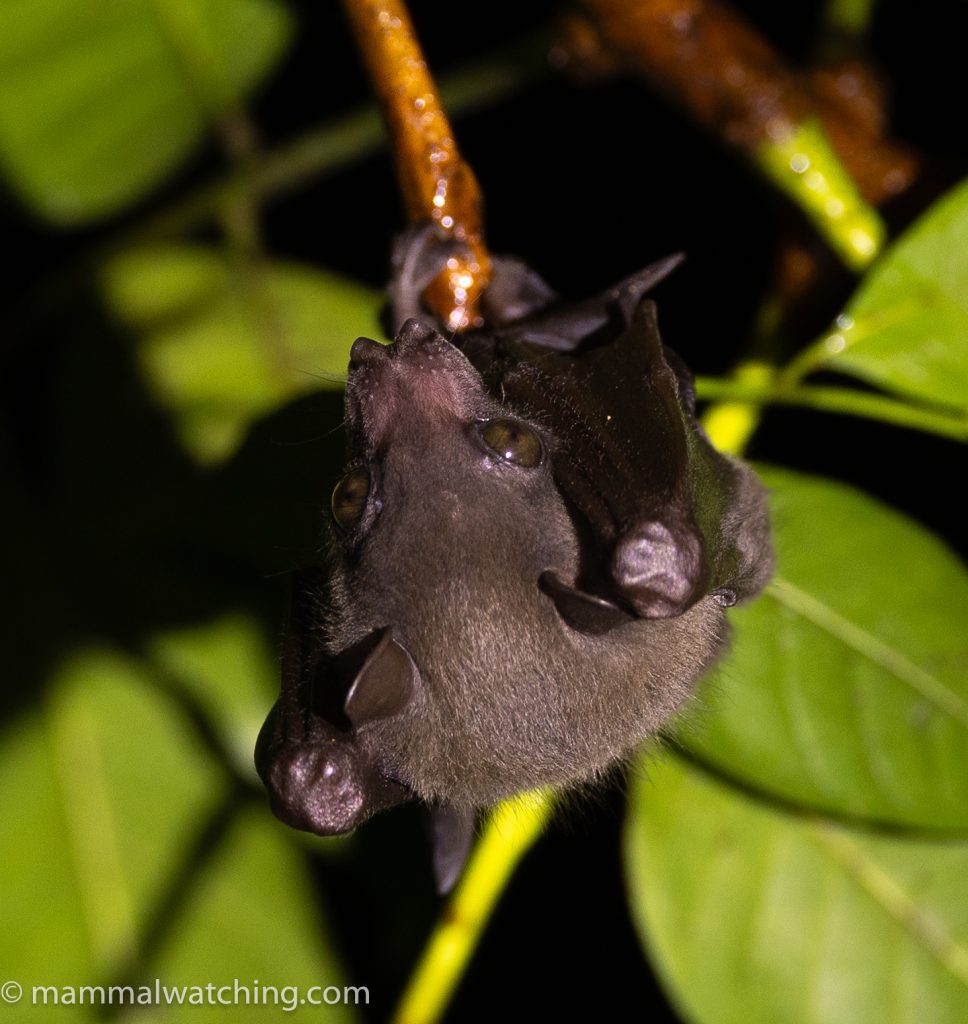
Fruit bat pup
In the morning we saw a range of squirrels, including Black-eared Pygmy Squirrel, Three-striped Ground Squirrels – both of which Hari found after hearing them call – as well as this colorful Prevost’s Squirrel. At night we saw Red Giant and Horsfield’s (Javan) Flying Squirrels.
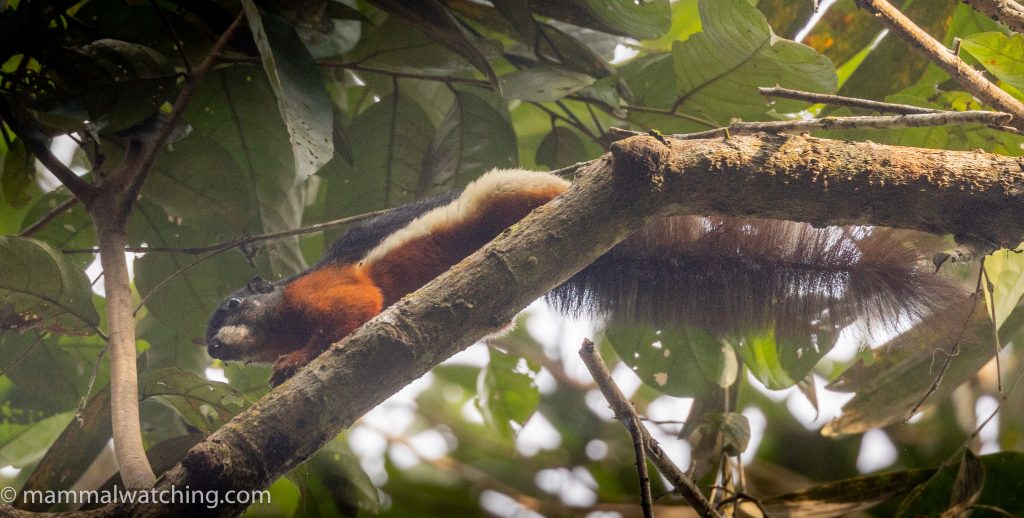
Prevost’s Squirrel (Callosciurus prevostii)
We also checked culverts for roosting bats. In 2015 we’d found some good bats including Lesser Woolly Horseshoe Bats, Malaysian Slit-faced Bats and Orbiculus Roundleaf Bats. We couldn’t find those species this time but did see Lesser False Vampires (as I had in 2015) and Acuminate Horseshoe Bats.
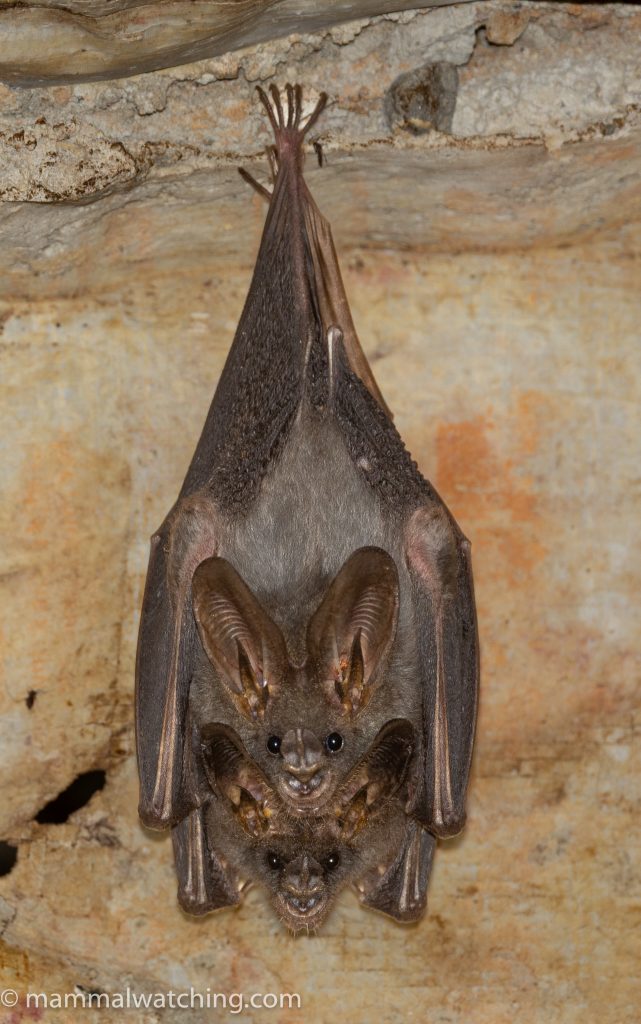
Lesser Asian False-vampire (Megaderma spasma)
Our second night drive in the park ended at 1am. We left for Bandar Lampung Airport at 4am for a complicated series of flights to Kendari in Sulawesi.
A big thanks to Hari for his excellent guiding and for setting up such a nice camp at the rabbit(less) place! Perhaps someone will cut some trails there before the next mammalwatchers visit.
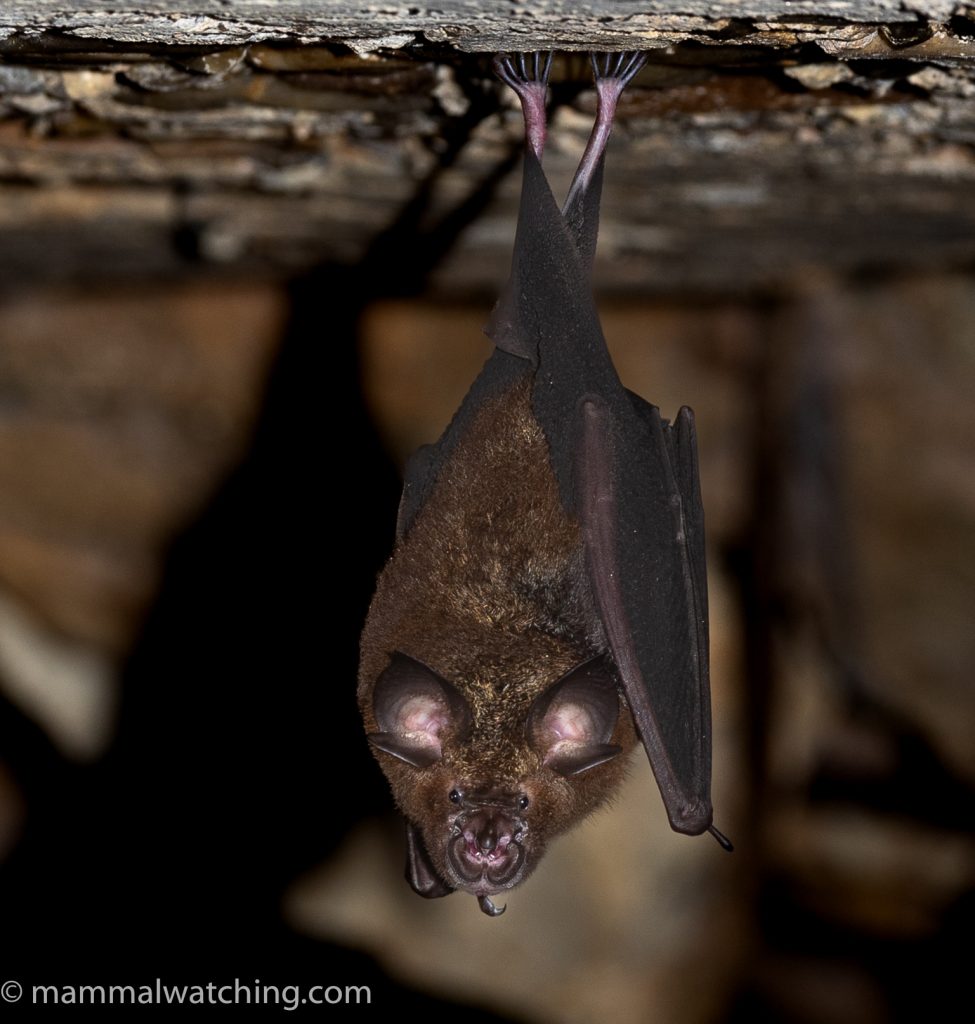
Acuminate Horseshoe Bat (Rhinolophus acuminatus)
Trip List
All species are from Way Kambas unless otherwise noted.
Pen-tailed Treeshrew (Ptilocercus lowii)
Long-tailed Macaque (Macaca fascicularis)
Black-crested Sumatran Langur (Presbytis melalophos) – lifer seen at the rabbit place
Mitered Langur (P.mitrata) – endemic
Sunda Silvery Langur (Trachypithecus cristatus)
Siamang (Symphalangus syndactylus) – seen at both Way Kambas and the rabbit place
Sunda Slow Loris (Nycticebus coucang)
Black-striped Squirrel (Callosciurus nigrovittatus)
Plantain Squirrel (C.notatus)
Prevost’s Squirrel (C.prevostii)
Three-striped Ground Squirrel (Lariscus insignis)
Black-eared Squirrel (Nannosciurus melanotis)
Javanese Flying Squirrel (Iomys horsfieldii)
Red Giant Flying Squirrel (Petaurista petaurista)
Lesser Asian False-vampire (Megaderma spasma)
Acuminate Horseshoe Bat (Rhinolophus acuminatus)
Trefoil Horseshoe Bat (R.trifoliatus)
Sunda Leopard Cat (Prionailurus javanensis)
Banded Palm Civet (Hemigalus derbyanus)
Masked Palm Civet (Paguma larvata)
Malay Civet (Viverra tangalunga) (probable)
Sambar (Rusa unicolor)
Southern Red Muntjac (Muntiacus muntjak)
Lesser Indo-Malayan Chevrotain (Tragulus kanchil)
Greater Indo-Malayan Chevrotain (T.napu)
25 species with one lifer
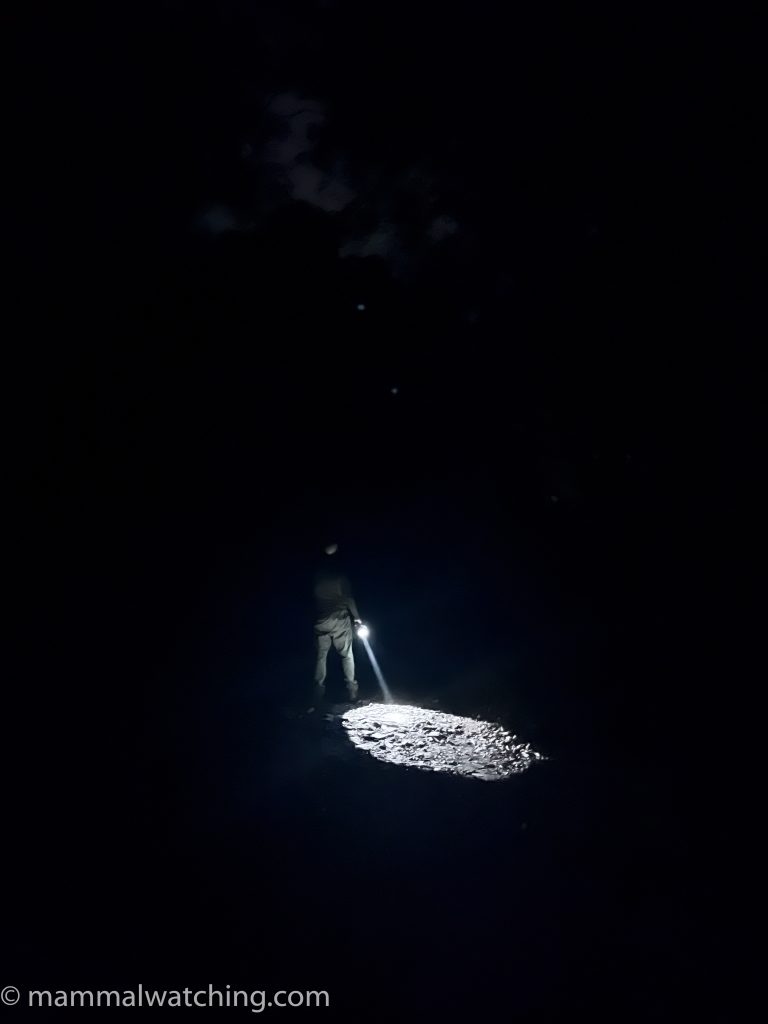
Photo by János Oláh
Post author


Leave a Reply
You must be logged in to post a comment.